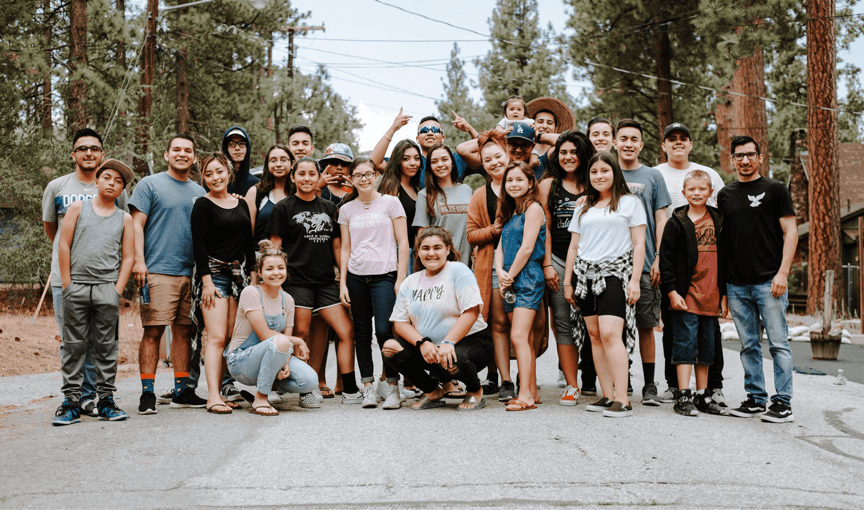What we do?
AHA! Well-being is a well-rounded, holistic and playful, well-being program, that includes people’s physical-, cognitive-, social-, and emotional learning and development.
● AHA! Well-being is science-based and follows the principles of physical literacy: agency, competence, social relationships, and enjoyment.
● Learners participate in physical activity every day, outdoors and/or indoors.
● An example of a weekly schedule could be 2 x 60 min of weekly P.E lessons + 3 x 20 min of weekly AHA! Well-being lessons. Adaptations can be tailored to the class’s needs. The AHA! Well-being program is organic in its implementation. It gives the facilitator a foundation and at the same time the flexibility to adapt to the group members' initiatives, originality, and uniqueness. The activities are a mix of aerobic, anaerobic, high intensity, strength training, agility and coordination, games, and above all play and fun!
● AHA! Well-being enhances learner competencies, learning, and well-being.
●AHA! Well-being uses recent findings in neuroscience to ensure that the activities positively impact the learner’s life. The facilitator does learning and teaching with the learners about neuroplasticity and well-being, through age-appropriate materials. The aim is to be able to use the knowledge about how our brain and body work, particularly how our neurotransmitters work to keep us balanced and motivated: oxytocin, serotonin, endorphins, dopamine, and cortisol.
● AHA!Well-being is communicated and modeled through the use of the facilitator's a growth mindset approach. Within the AHA!Well-being program we refer to it as the Athlete’s Mindset. It is vital that the facilitators act as role models, demonstrating resilience, motivation, and enjoyment through their actions. They walk the talk. The facilitator is creating an inclusive culture, a learning community where a growth mindset creates a safe, inclusive, and engaging place. John Hattie’s research has shown that the facilitator's effectiveness leads to learner's growth beyond the normal developmental curve of 0.4. (https://blogs.ibo.org/blog/2020/09/18/how-do-you-know-your-teaching-impacts-students-learning/).
● During the initial implementation phase of the AHA!Well-being program the facilitator carries out play-based physical activity lessons and creates learning activities with a focus on emotional intelligence, neuroscience, and growth mindset. As the students learn more they will be encouraged to collaboratively take agency and carry out lessons. The ultimate goal is for the learners to be inspired and become confident agents of change in their learning community and beyond, using their unique interests and skills to promote an inclusive, caring, collaborative and solution-oriented environment where well-being is in focus.
● AHA!Well-being includes social- and emotional learning skills such as enhancing emotional intelligence by developing confidence, coping skills, collaboration-, creativity- and communication skills. In addition, it includes the practice of mindfulness through yoga, relaxation, reflection, journaling, and self-care. Other focus areas are the importance of healthy habits such as sleep and healthy food. The participants are introduced to the self check-in tool, that monitors cognitive, social, emotional and physical health. All participants get a common vocabulary to speak about social and emotional learning.
● The learners have the opportunity to be part of the ambassador program. As an ambassador the learner act as a motivator and communicator. The ambassador organizes and leads events.
● The AHA!Wellbeing program has a positive and empowering impact on the facilitators’ lives by providing an optimal learning space where they build healthy relationships with their colleagues and the learners through trust, care, and fun. This leads to a united learning community that is confident, competent, collaborative, and has a lust for learning.
● We believe it takes a village to raise a child. We all play a crucial role in the development of a child’s life. The benefits of the program go beyond the school walls. It gives families and communities sustainable tools and strategies to thrive in our ever-changing society.
● The core of the program's mission is to unlock human potential. We are driven by the UNSDGS:
UNSDG 3: Ensure healthy lives and promote well-being for all of all ages
UNSDG 4: Ensure inclusive and equitable quality education and promote lifelong learning opportunities for all
This innovation started as a pilot at the International School Helsingborg, which is an IB World school, K-12 + Middle and Senior Years Programs. The school caters to students from all around the globe. Over 450 learners are now participating and above 50 educators.


